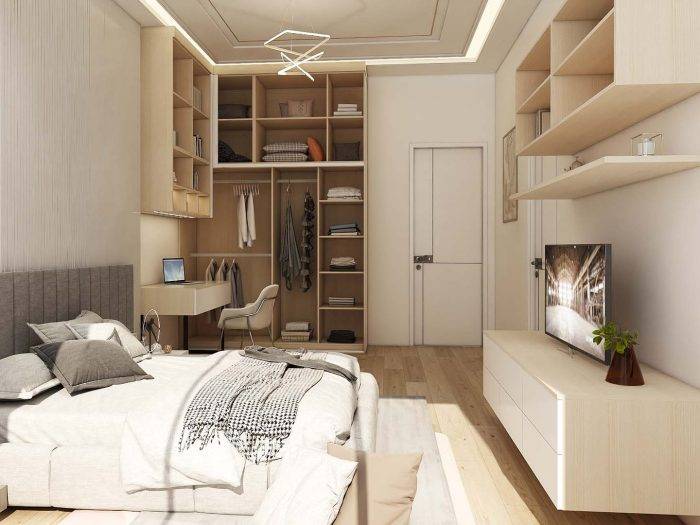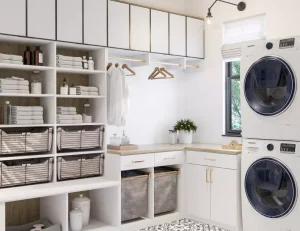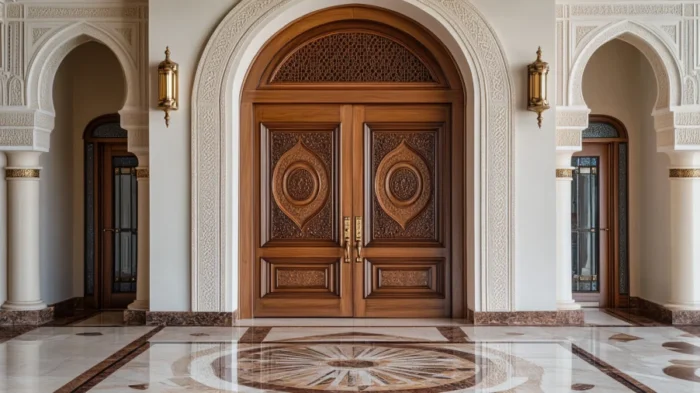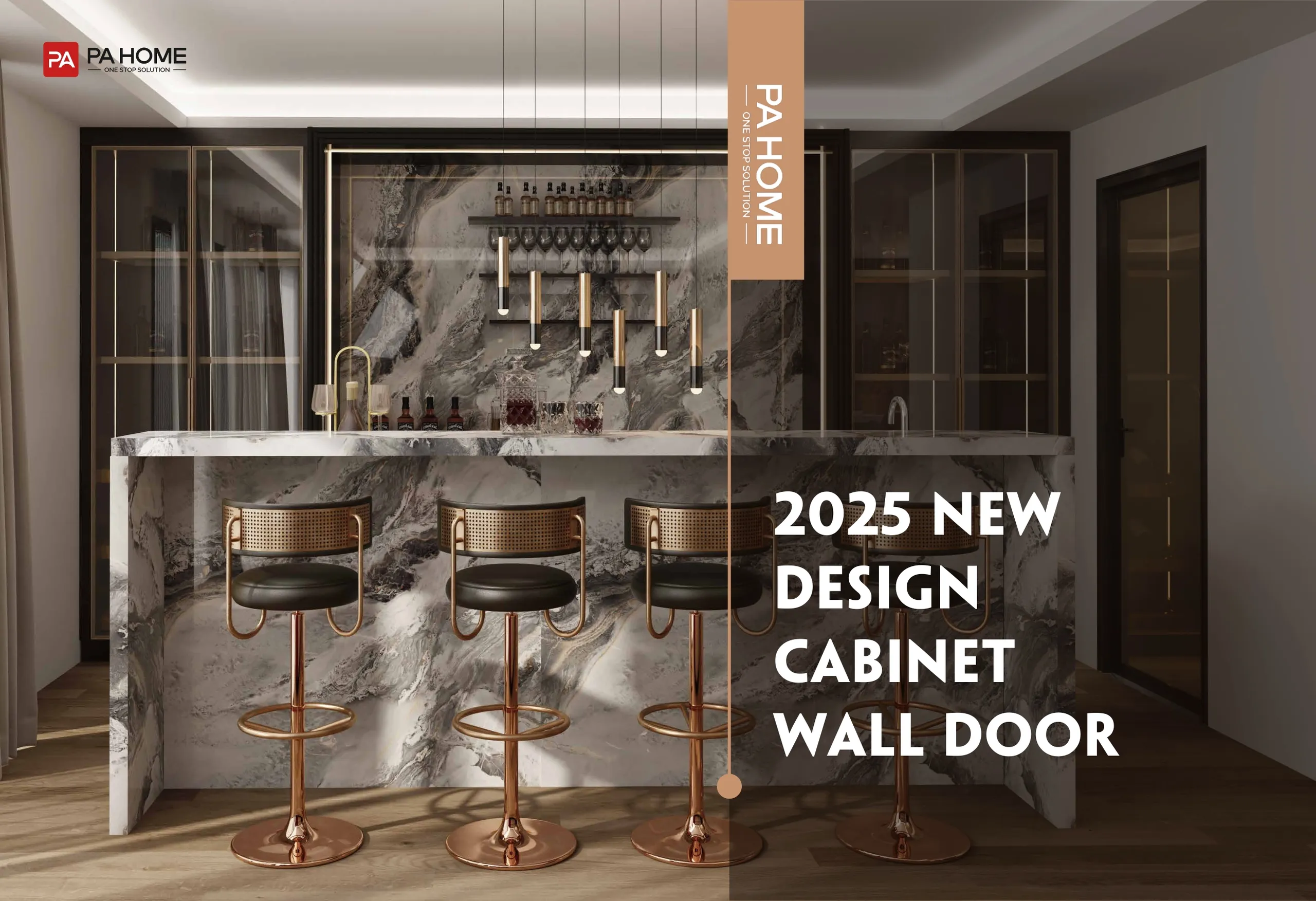When it comes to home renovations, cabinets aren’t just storage solutions—they’re a key element in defining your space’s style and functionality. Choosing the right cabinet design can solve many everyday issues, from clutter to mismatched decor. Today, homeowners are often caught between framed cabinets and frameless cabinets. Each option brings its own set of benefits and challenges. In this guide, we’ll take a deep dive into framed vs frameless cabinets, exploring every detail in a friendly, human tone that makes the decision process simple and clear.
What Are Framed vs Frameless Cabinets?
Framed vs frameless cabinets refer to two distinct cabinet construction styles that cater to different design philosophies and functional needs. Framed cabinets, known for their traditional approach, feature a solid wood face frame that outlines the door and provides robust structural support. This design typically incorporates standard inch dimensions, ensuring consistency and ease of maintenance, while delivering a classic aesthetic—often seen in popular styles like Shaker, with warm, inviting finishes in colors such as white, gray, or navy.
In contrast, frameless cabinets embody modern minimalism by eliminating the face frame entirely, resulting in a sleek, uninterrupted surface that maximizes internal storage space. Their design offers greater customization in both size and finish, making them ideal for contemporary interiors where a clean, airy look is paramount. When evaluating framed vs frameless cabinets, the choice ultimately hinges on your preference for traditional charm and reliability versus modern, customizable design and enhanced storage efficiency.
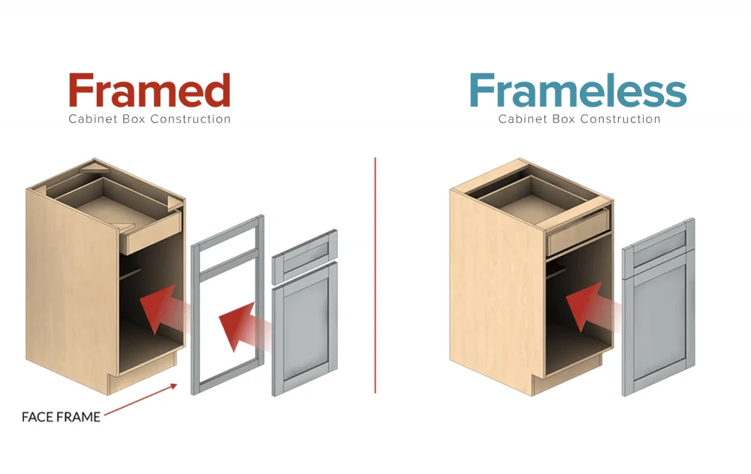
What Are the Differences Between Framed and Frameless Cabinets?
Understanding the nuances between the two types of cabinetry is essential. In this section, we will compare framed vs frameless cabinets from multiple perspectives to help you make an informed choice.
Structure and Design
Framed Cabinets
- Visible Face Frame: The most obvious feature is the face frame, which provides structural support and adds a visual element that many consider traditional and reassuring. This extra layer of wood not only reinforces the cabinet but also creates a classic layered look that appeals to those who prefer a more conventional design.
- Standard Production and Consistency: Since framed cabinets are produced in standard sizes, you benefit from a uniform product with predictable performance. However, this means customization is limited, which might be a drawback if you have a unique space.
- Traditional Craftsmanship: The design typically involves techniques such as 90° or 45° joinery. This craftsmanship is part of what makes framed cabinets a symbol of durability and reliability—a point often emphasized in “frameless cabinets vs framed” discussions.
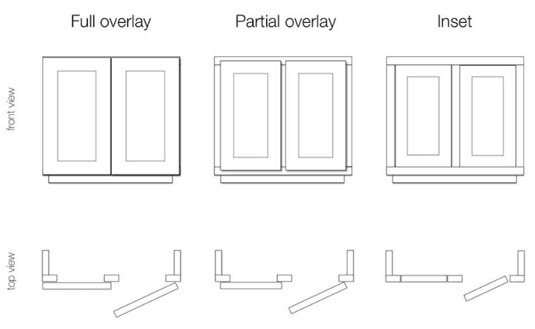
Frameless Cabinets
- Seamless Front Design: Without a face frame, these cabinets offer a uniform, uninterrupted surface. This creates a sleek and elegant look that fits seamlessly into modern homes. The absence of a frame means fewer visual interruptions, making the space appear more open.
- Enhanced Customization: Frameless cabinets are not restricted by standard sizing. Their modular design allows for greater flexibility, making them an excellent choice for custom kitchen layouts or unusual spaces. This adaptability is one of the key advantages highlighted in comparisons like “frame cabinets vs frameless.”
- Modern Engineering and Materials: These cabinets often incorporate advanced materials such as engineered wood and innovative adhesives. This results in a lighter overall construction without sacrificing durability. The modern manufacturing process used in frameless designs ensures precise cuts and a flawless finish.
Installation and Construction
Framed Cabinets
- Ease of Installation: The built-in face frame provides clear alignment points, which makes the installation process straightforward—even for DIY enthusiasts. This can be particularly attractive if you prefer to save on installation costs or enjoy home improvement projects.
- Simplified Maintenance: Repairing a framed cabinet is usually less complex. If a component fails, the frame allows for easy replacement of individual parts without compromising the integrity of the entire unit. This is a key benefit when evaluating frameless vs framed cabinets.
Frameless Cabinets
- Precision and Professional Installation: The sleek design of frameless cabinets means there is little room for error during installation. Precise measurements and adjustments are crucial to achieving a perfect alignment. As a result, these cabinets often require professional installation, which can increase overall costs but ensures a high-quality finish.
- Complex Maintenance: While frameless cabinets offer a modern look, their repair and maintenance may be more complex due to the integrated design. Any adjustments or repairs often require specialized tools and expert handling, which is a trade-off for the sleek aesthetics they provide.
Materials and Craftsmanship
Framed Cabinets
- Traditional Materials: These cabinets are typically constructed using solid wood, MDF, and layered plywood. These materials have been time-tested, offering a combination of strength and durability that is hard to beat.
- Artisanal Craftsmanship: The joinery techniques used—such as 90° and 45° joints—not only secure the cabinet structure but also add an element of craftsmanship that enhances their traditional appeal.
Frameless Cabinets
- Modern Engineering Materials: The construction of frameless cabinets often involves high-tech engineered wood and advanced adhesives. This approach not only reduces weight but also allows for precise, consistent results across units.
- High Precision Manufacturing: Every piece is meticulously crafted to ensure a flawless fit. This precision is essential for the seamless appearance of frameless cabinets and is a significant factor in the “frameless cabinets vs framed” debate.
| Feature | Framed Cabinets | Frameless Cabinets |
|---|---|---|
| Design | Traditional, classic look | Modern, sleek appearance |
| Structure | Includes visible frame for support | No frame; maximizes internal space |
| Installation | Generally simpler, guided by frame | Requires precise installation |
| Customization | Standard sizes, less flexible | Highly customizable in size and finish |
| Maintenance | Easier to repair individual parts | May require more skilled maintenance |
| Price Range | Predictable and stable | Can vary based on customization |
What Are the Pros and Cons of Framed vs Frameless Cabinets?
Now, let’s break down the benefits and drawbacks of each cabinet style to help you decide which one suits your needs best.
Framed Cabinets
Pros
- Sturdy and Durable: The face frame provides extra strength, making these cabinets ideal for heavy use. Their traditional construction is built to last, a crucial point when comparing framed vs frameless cabinets.
- Easy Maintenance and Repair: With their modular design, any damage can often be repaired without replacing the entire unit. This ease of maintenance is especially valuable for families who need a long-lasting solution with minimal upkeep.
- Classic, Timeless Design: The traditional aesthetic of framed cabinets works well in a variety of settings, from country kitchens to elegant dining rooms. Their design exudes a sense of heritage and stability, which many homeowners find comforting.
- Predictable Pricing: Because they are mass-produced in standard sizes, framed cabinets usually have stable, predictable pricing. This makes budgeting easier and ensures you’re getting a consistent product.
Cons
- Limited Customization: The reliance on standard sizes means that these cabinets may not perfectly fit non-standard spaces. This can be a drawback if you have an unusual layout or specific design needs.
- Heavier Appearance: The visible frame can sometimes make the cabinets look bulky. In smaller or more modern spaces, this may detract from the overall sleekness and can make the room feel more crowded.
- Reduced Storage Efficiency: The frame itself occupies space that could otherwise be used for storage. This can be a disadvantage in kitchens where every inch counts, especially when comparing frameless vs framed cabinets.

Frameless Cabinets
Pros
- Modern, Sleek Look: The minimalist design offers a clean, modern aesthetic that is perfect for contemporary homes. The seamless front creates a sense of openness and sophistication that many modern homeowners love.
- Maximized Internal Storage: Without a face frame, more of the cabinet’s interior is available for storage. This extra space can be a game-changer, especially in compact or heavily utilized kitchens.
- High Degree of Customization: Frameless cabinets can be tailored to fit any space. Their modular design allows for custom sizes, finishes, and configurations that suit your personal style and layout requirements.
- Clean and Uncluttered Appearance: The lack of a frame provides a visually uninterrupted surface that makes the room appear larger and more streamlined—a key benefit when comparing “frameless cabinets vs framed” options.
Cons
- Installation Challenges: Achieving the perfect alignment requires precision and expertise. This often means professional installation is necessary, which can add to the overall cost.
- Complex Repairs: If a part of the cabinet is damaged, the repair process may be more complicated and require specialized skills or tools. This is a trade-off for the modern look and extra storage space.
- Variable Pricing: Because these cabinets are often custom-made, prices can fluctuate based on design complexity, materials, and installation requirements. This variability can be a challenge when planning your renovation budget.
Top Design Trends in Framed vs Frameless Cabinets
The cabinet design landscape is constantly evolving, and understanding the latest trends can help you choose the style that best fits your home. Whether you’re comparing framed vs frameless cabinets or considering frameless cabinets vs framed options, each style brings unique aesthetics and practical benefits to your space.
Design Styles for Framed Cabinets
Framed cabinets are renowned for their traditional charm and robust construction. Their classic look makes them especially well-suited for several design styles:
• Traditional and Vintage Homes:
Framed cabinets feature solid wood face frames and detailed joinery that add warmth and character. Their time-tested design creates a sense of heritage, making them perfect for homes that celebrate classic and vintage aesthetics.
• Country and Rustic Designs:
With finishes in natural wood tones or deep white, framed cabinets enhance rustic kitchens and dining areas. Their substantial appearance evokes comfort and nostalgia, ideal for environments that aim for a cozy, lived-in feel.
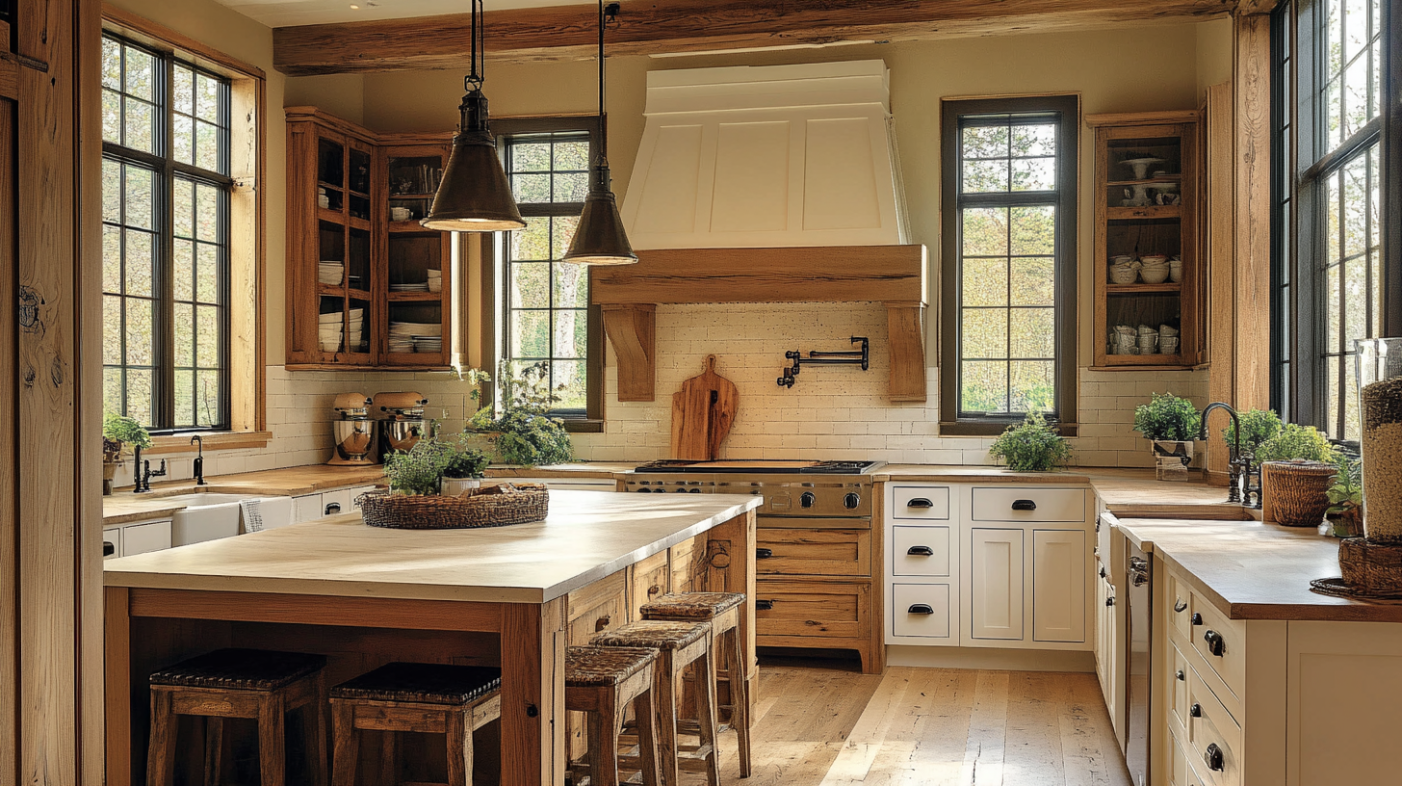
Design Styles for Frameless Cabinets
Frameless cabinets, recognized for their clean and minimalist design, cater to more modern, streamlined interiors. Their design versatility makes them an excellent choice for:
• Contemporary and Modern Homes:
Frameless cabinets boast sleek lines and uninterrupted surfaces that create a spacious, airy feel. This design is perfect for modern interiors where minimalism and a clutter-free look are paramount.
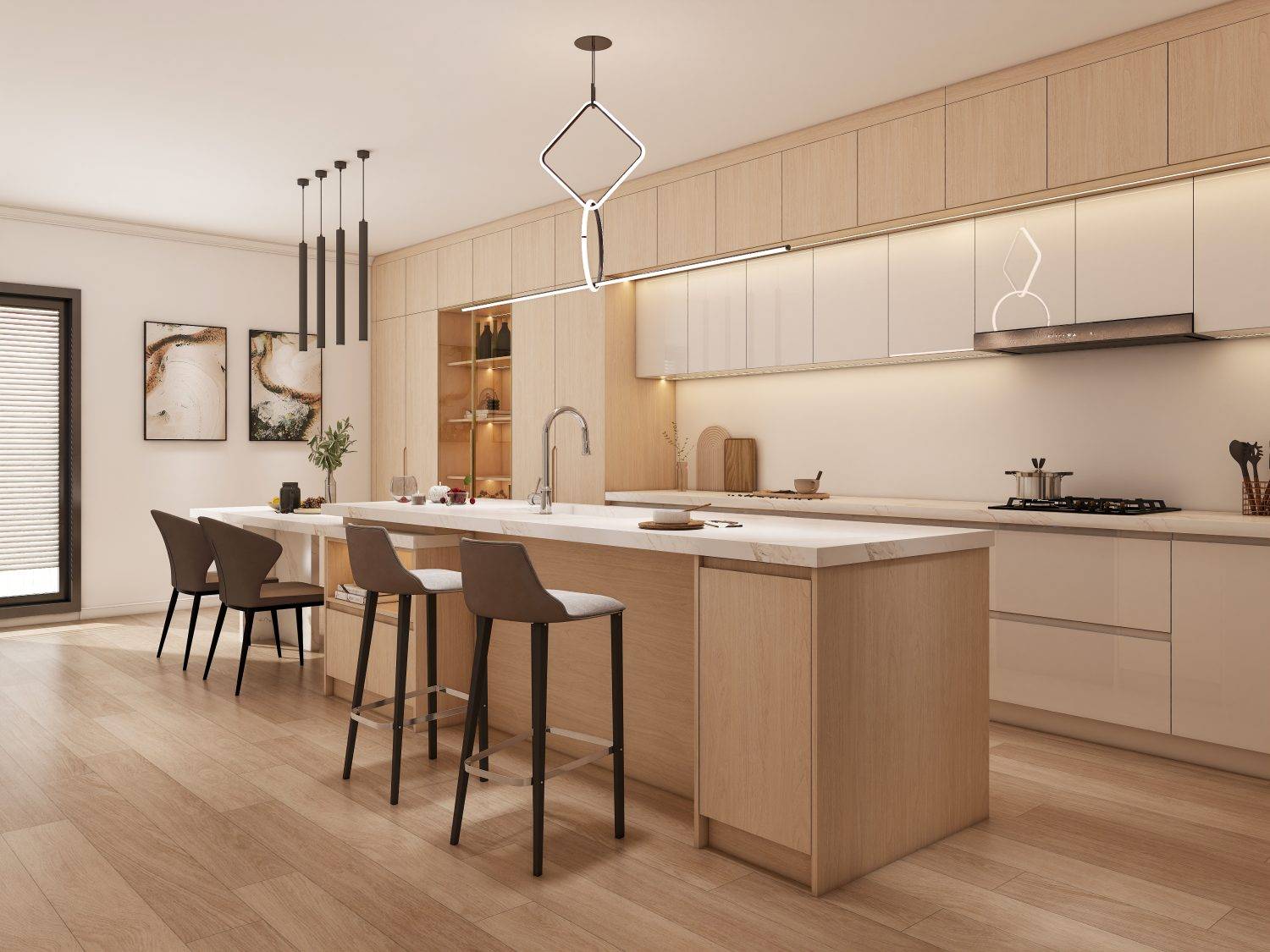
• Scandinavian and Minimalist Designs:
Emphasizing functionality and simplicity, frameless cabinets support the light, natural vibe typical of Scandinavian interiors. Their clean design ensures that every element of the space remains uncluttered and serene.
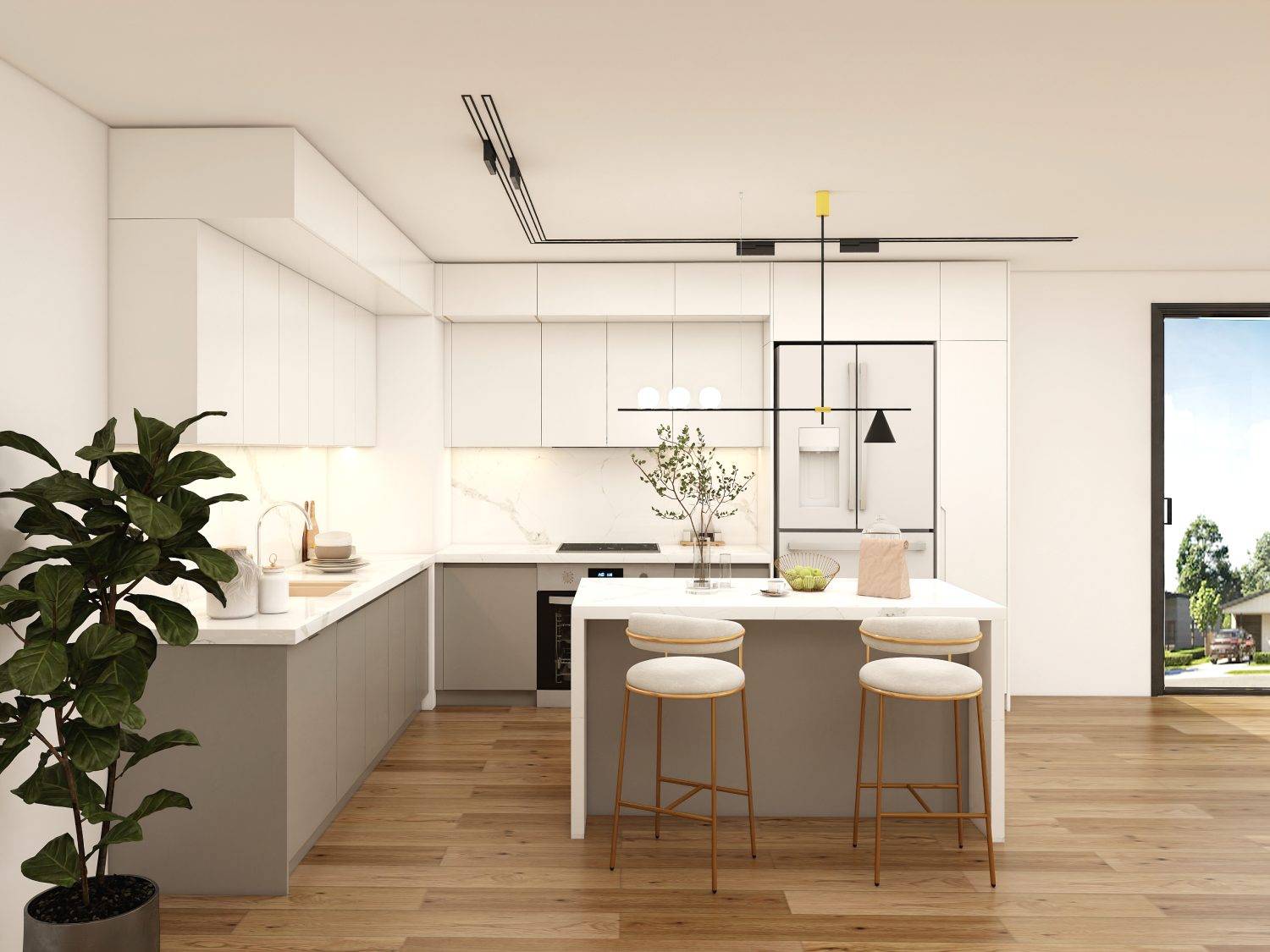
• Customized, Bespoke Kitchens:
Frameless cabinets offer high customizability in terms of size, finish, and configuration. This makes them ideal for homeowners who need tailor-made solutions that perfectly fit unique spaces and specific design visions.
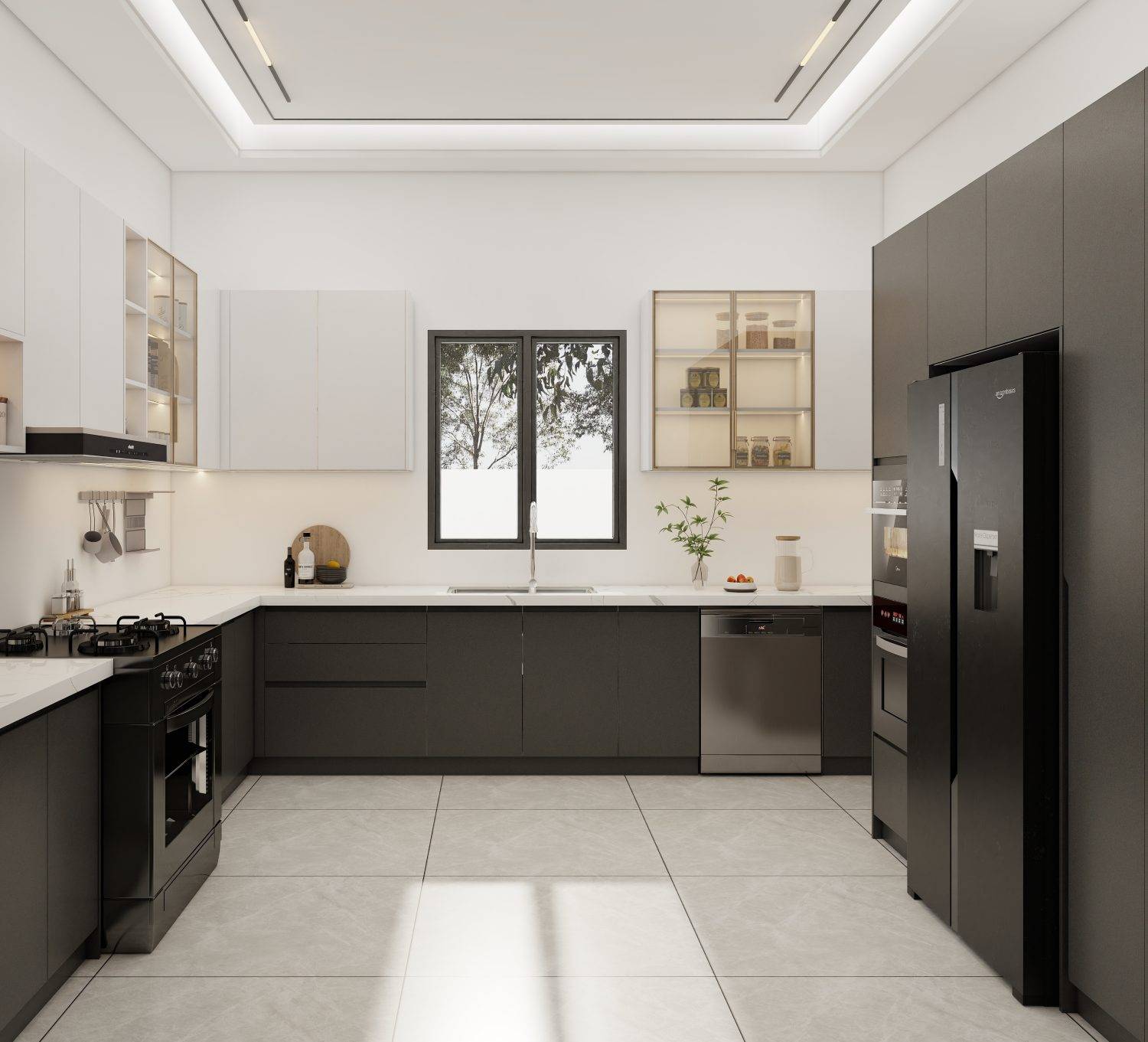
Framed vs frameless cabinets:which better for customization?
When comparing framed vs frameless cabinets, frameless cabinets clearly excel in customization. Unlike frame cabinets vs frameless options that follow standard sizes, frameless cabinets allow for tailored configurations to perfectly fit your unique space. Their design, free from a traditional face frame, enables precise adjustments, making them ideal for modern, bespoke kitchens and living areas. This flexibility supports a wide range of finishes and innovative features, setting them apart in frameless vs framed cabinets debates.
Whether you’re redesigning a compact urban space or planning a luxury kitchen, choosing frameless cabinets means enjoying a sleek, seamless look along with maximum storage efficiency. For anyone weighing frameless cabinets vs framed alternatives, the enhanced adaptability of frameless cabinets makes them the superior choice for achieving a personalized, state-of-the-art home design.
Top frameless cabinets munufacture
PA Home was established in 2009 and is based in Foshan, Guangdong, China. As a leading high-end home customization brand, PA Home specializes in frameless cabinets—a perfect embodiment of modern design and efficient space utilization. Over the past 17 years, PA Home has built a sterling reputation by delivering innovative, fully customized home solutions across over 80 countries and 250 cities, completing more than 42,000 projects and forging long-term partnerships with over 3,500 corporate clients.
Lorem ipsum dolor sit amet, consectetur adipiscing elit, sed do eiusmod tempor incididunt ut labore et dolore magna aliqua. Ut enim ad minim veniam, quis nostrud exercitation ullamco laboris nisi ut aliquip ex ea commodo consequat.
Lorem ipsum dolor sit amet, consectetur adipiscing elit, sed do eiusmod tempor incididunt ut labore et dolore magna aliqua. Ut enim ad minim veniam, quis nostrud exercitation ullamco laboris nisi ut aliquip ex ea commodo consequat.
Expertise in Frameless Cabinets
PA Home focuses on frameless cabinets because PA Home believes in the sleek, minimalist design that maximizes storage space and complements contemporary interiors. PA Home’s frameless cabinets are engineered to offer a seamless, modern look without compromising on durability or functionality. This focus on frameless vs framed cabinets technology allows PA Home to lead the market with products that are not only visually striking but also engineered to perfection for efficient performance.
Comprehensive Home Solutions
Beyond the specialization in frameless cabinets, PA Home’s extensive product range includes custom wardrobes, bathroom vanities, aluminum alloy doors and windows, interior doors, and wall panels. PA Home’s offerings cater to residential, commercial, and hospitality projects, ensuring that every detail of a home or business space is meticulously customized to the client’s taste.
Global Manufacturing Facilities
- China, Guangdong (Zhaoqing): 80,000 square meters of production space.
- Indonesia: 15,000 square meters of manufacturing facility.
- Saudi Arabia: Two plants in development—one in Dammam (240,000 square meters) and another in Riyadh (5,500 square meters, with an annual capacity of 10,000 sets).
- United Arab Emirates, Dubai: 1,500 square meters of facility space.
These state-of-the-art facilities enable PA Home to consistently deliver top-quality products while maintaining a competitive edge in the frameless cabinets vs framed arena.
Trusted by Industry Leaders
As one of China’s top ten custom cabinetry brands, PA Home is the trusted partner for developers, contractors, and luxury homeowners. PA Home’s commitment to excellence and customer satisfaction has made PA Home a go-to choice for large-scale projects and high-end residential developments, embodying the best practices in frame cabinets vs frameless design.
When choosing PA Home, clients are not just selecting a product—clients are choosing a legacy of innovation, precision, and exceptional quality in frameless cabinetry that stands the test of time.
Conclusion
Choosing between framed vs frameless cabinets isn’t just about style—it’s about finding the perfect balance between tradition and modernity, functionality and design. Here’s a brief recap:
Framed Cabinets:
They offer a robust, classic design with a solid face frame, making them easy to install, repair, and maintain. Ideal for those who appreciate a time-honored aesthetic and straightforward functionality. Their predictable pricing and enduring quality make them a safe bet, especially for traditional kitchens.
Frameless Cabinets:
They boast a modern, sleek look with an emphasis on maximizing storage space. Perfect for contemporary homes that value flexibility and customization. While they might require professional installation and come with variable costs, their design offers a clean, seamless appearance that many find irresistible.

Ultimately, the decision between frameless vs framed cabinets depends on your personal style, your home’s layout, and your practical needs. Whether you lean towards the enduring charm of framed cabinets or the innovative appeal of frameless designs, both options have their unique benefits and trade-offs.
We hope this comprehensive guide has provided you with the insights needed to make an informed decision. If you have any questions or need further guidance, feel free to leave a comment or reach out to our experts. Happy renovating, and may your cabinets be as functional as they are beautiful!
FAQs about framed vs frameless cabinets
Framed cabinets feature a solid wood face frame attached to the front of the cabinet box, providing structural support and a traditional aesthetic. In contrast, frameless cabinets, also known as European-style or full-access cabinets, lack this face frame, offering a sleek, modern look and maximizing interior storage space.
Yes, frameless cabinets typically provide more usable interior space. Without the face frame, there’s additional room for wider drawers and larger items, enhancing storage efficiency.
Frameless cabinets can be more costly due to their modern design and the precision required for installation. Their lack of a face frame necessitates exact measurements and professional installation to ensure proper alignment and function.


